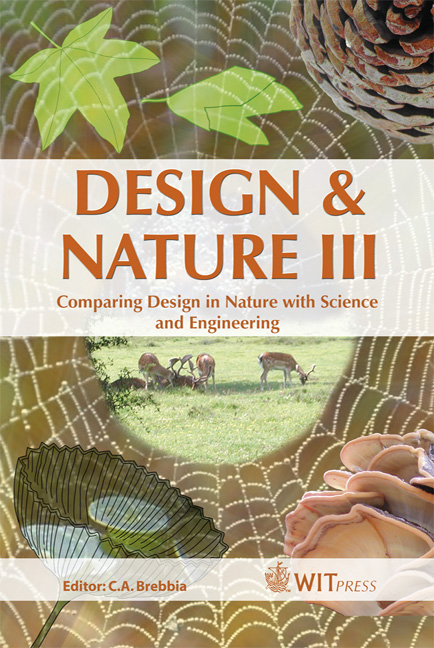Reinforcement Ropes Against Shear In Leaves
Price
Free (open access)
Transaction
Volume
87
Pages
6
Published
2006
Size
1,119 kb
Paper DOI
10.2495/DN060201
Copyright
WIT Press
Author(s)
C. Mattheck, A. Sauer & R. Kappel
Abstract
Biological structures consist of mechanical load carriers, which are highly optimized in terms of mechanical strength and minimum weight. Many parts of these structures act as tension ropes, even if this cannot always be identified immediately. The advantage of tension-loaded components is that they cannot fail by kinking or buckling like pressure-loaded ones if their aspect ratio is too high. Special application ranges for tension ropes exist in structures, which are frequently exposed to shear loading. Examples are leaves in the wind or bird feathers during a flight. When looking at the supporting skeletons, there are tensile ropes releasing the structure from shear. To verify this statement, the vein pattern of a leaf is studied for mechanical suitability using the Soft Kill Option (SKO) structure optimization program. It is found that the leaf is formed in a mechanically optimum manner. The structure is stiffened by tension ropes acting as shear killers. Subsequently, an SKO parameter study is performed to investigate and determine influencing parameters and their relevance to the formation of shear killers. Keywords: leaf structure, shear killer, bionic, biomimetic, vein angle. 1 Introduction When a storm shakes and bends a tree, enormous forces act on the leaves. The leaf surface with its side veins that branch off at about 45° resists these wind forces. Side veins transmit the tension induced by the wind from the leaf surface via the main vein into the branch and, hence, act like stiffening tension ropes. Their efficiency is reflected by the fact that in reality a storm will more likely tear the leaves off the stalks than rip off the leaf surface.
Keywords
leaf structure, shear killer, bionic, biomimetic, vein angle.





